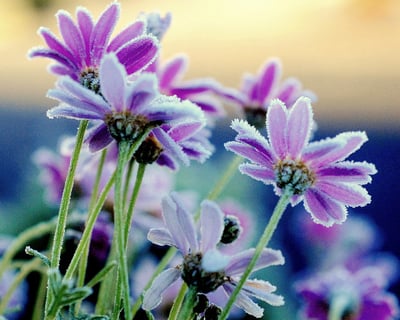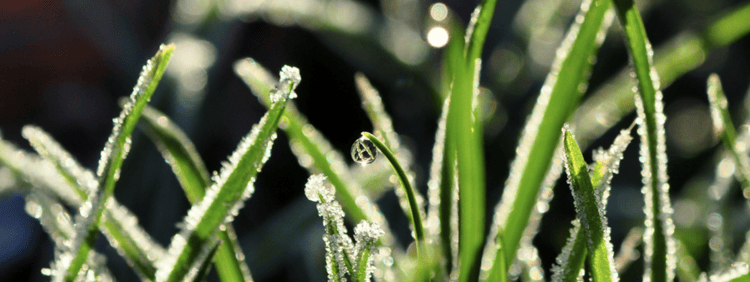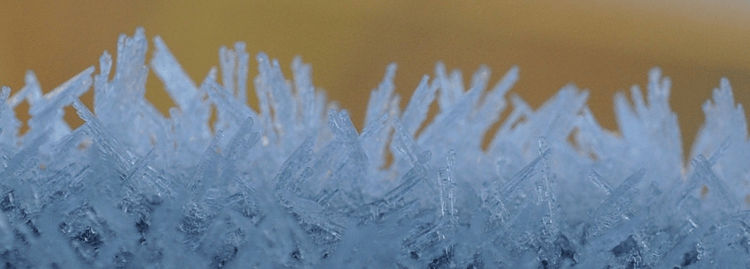 While Florida rarely sees temperatures dipping below freezing, it does happen. Homeowners and commercial property managers should be aware of what to do when temperatures drop, so they can maintain their landscaping investment.
While Florida rarely sees temperatures dipping below freezing, it does happen. Homeowners and commercial property managers should be aware of what to do when temperatures drop, so they can maintain their landscaping investment.
Global warming brings polar vortexes to Florida some years, but not others. This weather condition causes frost and ice, which isn’t good for our plants. Fortunately, on average, there are fewer than five days a year when Northwest Florida gets temperatures at 32 degrees and below.
That said, here are some things to keep in mind when the weather dips at or below freezing.
Frost Vs. Freeze — What’s The Difference?
According to NOAA, frost occurs under similar conditions to dew, but in the case of frost, surface temperatures fall below 32°F and instead of dew drops, ice crystals form. You might notice prime frost conditions to include thermometer temps in the mid 30s, clear night skies and calm winds.
For a freeze, the air is still cold, but it’s considerably dryer. Much like a frost, surface air temperatures are at 32° F or below. However, for a freeze to happen, a cold air mass typically moves into an area bringing freezing temperatures. Prime freeze conditions are the opposite of a frost and include winds above 5 mph and cloud cover.
4 Ways To Prevent Winter Frost Damage
Cover Susceptible Plants
If a frost is imminent — and depending on its intensity and duration — covering the plants in your landscape may not be 100% effective, but it helps minimize damage.
To cover the plants, homeowners can typically use a normal bed sheet, a tarp or frost cloth — which is available at local home improvement stores and on nursery supply websites. If you plan to cover your plants, make sure to secure it so that any wind gusts will not blow away your cover.
It’s also important to remove the tarp shortly after the temperatures are above freezing — otherwise you could bake your plants! Northwest Florida has some extreme temperature shifts, where it can be 28 degrees at night, rising to 50+ during the day.
Educated Plant Selection For Future Frosts

The Northwest part of Florida is unique. Tropical plants do well here, even though we’re not in the USDA zoning area typically known for these growing them. But subtropical plants thrive here year round, except when there’s a polar vortex.
If you’re planting new things in your yard, you may want to take frost into consideration. While there were no freezes in 2013, we had multiple frost events in 2014 and 2015. Plants susceptible to frost include hibiscus, crotons, Robellini palms and some citrus trees. Two citrus trees that can withstand freezes are satsumas and grapefruit trees.
Any kind of potted plants and container gardens are most susceptible to freezing temperatures because their root masses drop below freezing. If you are able to bring your potted plants inside during the freeze, it will help the plants.
If there’s frost on the grass, minimize foot traffic on it until the temperatures are above freezing. This is because you can break your grass blades walking on them if they’re frozen. You won’t kill the grass, but it’s more stressful to the plant than necessary.
Creating A Windbreak
When planting with the purpose to create a natural windbreak, GreenEarth recommends the following plants for a fast-growing windbreak that will keep strong winds — warm or cold — at bay:
- Japanese Yew
- Viburnum
- Wax Myrtle
- Ligustrums
- Yaupon Holly
Planting a green screen, so to speak, can make your yard less sensitive to windy weather and also help protect any less hardy plants in your landscape from severe temperature drops and bone-chilling winds.
Remember Your irrigation System
Don’t forget about your irrigation system. Most homes in Northwest Florida use non-potable irrigation water, via a pump. Make sure your irrigation pump is turned off. If you have an above ground pump, it’s important to drain it.
Cast iron pumps can expand and contract with the water temperature changes, causing cracks. Fortunately it’s easy to drain, much like draining the oil from a car. It only takes a few minutes to pull the plug and let it drain, and this is something homeowners can do themselves.
What Can A Landscaper Do For Me When There Is A Frost Warning?

Frost coverage is not a service that landscape companies usually provide. You can ask your landscaper about this, though, and get additional tips and recommendations from them.
They can also tell you about microenvironments in your yard. Microenvironments are areas with a different temperature in different parts of the yard. The best example of this is the pool area. Since pools are often heated in winter, even just to 50 degrees, the area around them is warmer.
If you have potted plants on the pool deck, they’ll remain warmer because of this, even if other areas of the yard are affected by frost. Talk to your landscaper to find out what landscaping areas can be affected by a frost. This is something they should easily educate you on.
GreenEarth Can Help You Prepare For Frost
At GreenEarth, we can help you plan your landscaping to withstand frost events — before and after. And for the few frost days a year Northwest Florida gets, we can give you customized advice based on your landscaping, so we can help you maintain your landscape investment.
If you’d like a consultation or want to know what we can do to help you, give us a call at our Panama City Beach office at (850) 236-1959, or call our Santa Rosa Beach office at (850) 267-0010 to set up an appointment. You can also fill out the online form on our website to schedule a consultation.
Images: Frosted flowers, Frost on grass, Frost crystals
.png?width=7889&height=5988&name=GE%20LOGO%20clear%20(1).png)
